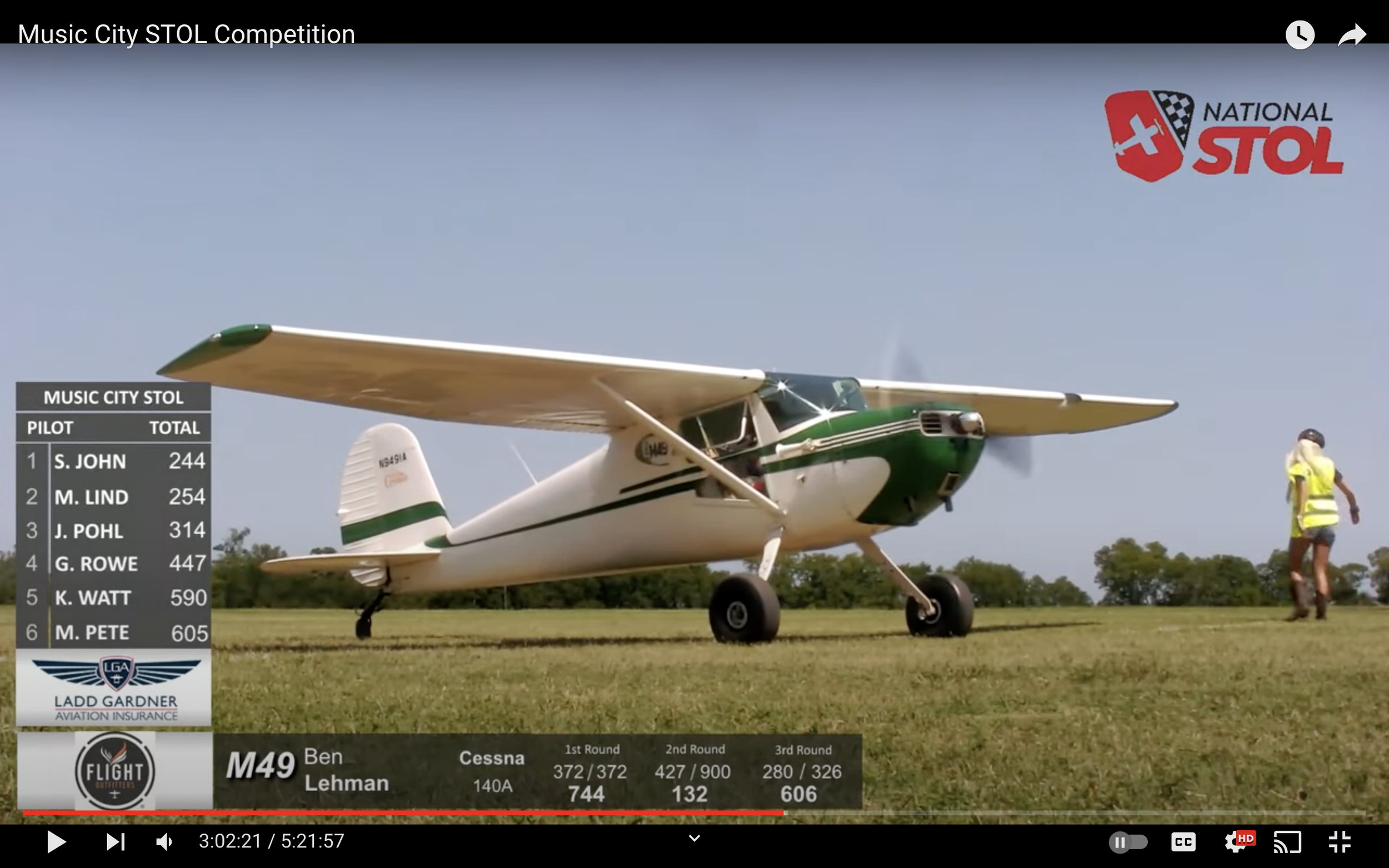What I Learned from My First National STOL Competition
From the early days of flying folks have been thinking about how planes could take off and land on shorter runways. Pilots and engineers alike saw the perks of having airplanes that could handle smaller and tougher airstrips. During World War II the need for military aircraft to operate from makeshift or unprepared airstrips led to the development of various STOL technologies. Aircraft like the Fieseler Fi 156 Storch and the de Havilland Canada L-20 Beaver demonstrated impressive STOL capabilities during this period.
STOL stands for "Short Takeoff and Landing." It refers to the capability of an aircraft to operate from runways that are shorter than what is typically required for conventional takeoffs and landings. Aircraft with STOL capabilities are designed to take off and land in confined spaces, making them suitable for operations in areas with limited runway length or in rugged terrain.
Today, the legacy of STOL is not only seen in the bush planes of remote landscapes but has also evolved into thrilling competitions that showcase the remarkable short-field prowess of modern STOL aircraft. From the rugged bush planes that conquer remote landscapes to the cutting-edge technologies of modern STOL aircraft, the National STOL Competition series is the leading organization showcasing and bringing together pilots, enthusiasts, and aviation experts to witness the thrilling spectacle of planes defying the limits of conventional takeoffs and landings. And this past year the series hosted its first competition in Tennessee — nowhere other than my home airport! The Music City STOL was organized by our local EAA Chapter 1343 and open to anyone to compete. So, with some feelings of trepidation I signed up!
I had marveled at many a STOL competition but knew very little about how they actually function. Fortunately the National STOL and volunteers are organized and made the experience for a newbie feel welcoming and achievable. In one of the required pre-competition flight briefings we learned not only about important safety procedures but also how the event operates for competitor pilots. It’s quite simple — airplanes are divided into classes and then you are placed within in your class in an order that will provide adequate spacing (and I think in strategical allotments for entertainment value). A Notice to Airmen (NOTAM) is issued preceding the date alerting all aircraft of the event on the field. The airport itself is generally not shut down, it remains open to other aircraft. On the day of the event an Airboss notifies incoming traffic, sequences the STOL competitors and gives guidance and updates. It’s really that easy — just listen to the Airboss and follow their direction. The STOL pattern is abbreviated, flown at 400ft above ground and within a quarter mile of the STOL strip. Pull up to the starting line when your number is called, brush away the nerves, hold the brakes, go full throttle and release! Come back around and show the crowd what you’ve practiced!
Scoring is done by totaling your takeoff distance and your landing distance. You get three attempts. My best score was 606ft, which was a 280ft takeoff and 326ft landing (I have antiquated single puck brakes). I know I can get the landing under 300ft and ultimately my goal is a score of 500ft.
I didn’t set a world record but I learned a lot through experimenting with STOL techniques and gained new confidences. You’ll never look at a runway the same, knowing you need a mere fraction of what is available. How short you can land is a hallowed skill among pilots and yet one rarely practiced. If it’s never practiced then when the skill is actually needed most you’ll be at a loss. I encourage you to consider safely practicing and challenging yourself to your own STOL and see where it leads! You will improve!
That’s me in the little green/white Cessna in the video above — enjoy!
